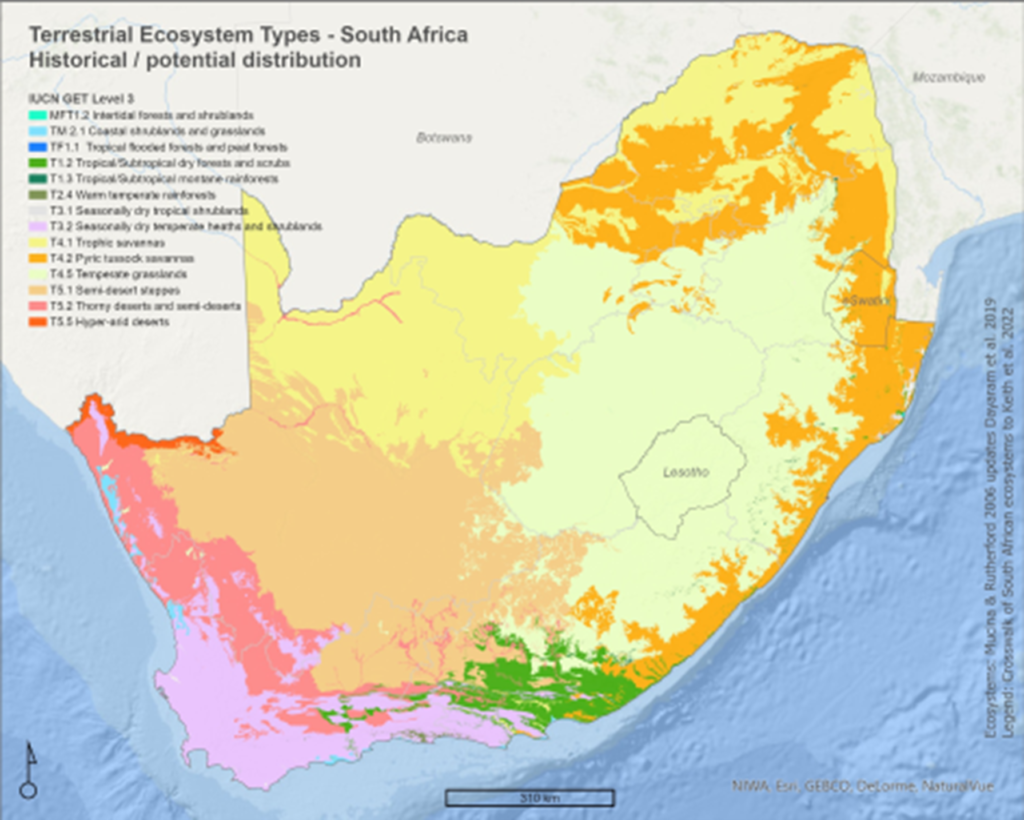Biodiversity is simply the variety of life on earth at the genetic, species, and ecosystems levels. Although it provides a wide suite of benefits to society, ranging from food, fiber, carbon storage, culture, recreation, and aesthetics, it is rapidly deteriorating due to a variety of threats, with land use change and climate change being the most significant. Although CEOS has had a “Biodiversity Activity” for perhaps a decade it has kept a very low profile. However, with the publication of a variety of studies documenting the magnitude of the deterioration, its increasing rate, the lack of sufficient monitoring, and the degree of societal dependence, it became clear that CEOS should explore ways to further engage with biodiversity and the biodiversity community. The Ecosystem Extent Task Team was proposed as an initial vehicle to enable that exploration; it was approved at the 2022 CEOS Plenary for a two year duration and is co-led by Gary Geller (NASA), Shaun Levick (CSIRO), Sandra Luque (CNES/INRAE), and Roger Sayre (USGS).
Ecosystem Extent is the distribution of an ecosystem or ecosystems of interest, perhaps most often captured as a map; for example, the figure shows a map of ecosystems in South Africa. Ecosystem Extent is a key parameter in understanding and monitoring the world’s biodiversity—consequently, it is an Essential Biodiversity Variable, a “Headline Indicator” in the Convention on Biological Diversity’s Kunming-Montreal Global Biodiversity Framework, and an Ecosystem Account in the UN System of Environmental Economic Accounting. It was selected as the EETT’s focus area both because of its importance and because Earth observation is typically its primary input. The EETT’s Terms of Reference identify two major deliverables: a white paper that provides an integrated international perspective on how space-based Earth observations can be used to support ecosystem mapping and monitoring with a focus on ecosystem extent, and a demonstrator to highlight the use of EO for ecosystem extent mapping and monitoring. The white paper is now complete and was endorsed by Principals at the 2023 Plenary; it is available here.

Image courtesy of Andrew Skowno, SANBI
Several opportunities for the Demonstrator have been identified and are underway, though at very different stages of maturity; all of them are led and developed by a partner organization. The most mature is under development by Environment and Climate Change Canada as part of the work they are doing in the Hudson’s Bay Lowlands, a vast wetland area in northern Manitoba; it will focus on Wapusk National Park and is led by EETT member Jason Duffe. The other two have much shorter timelines due to their funding starts; one focuses on Costa Rica (funded by CNES in November and led by EETT co-lead Sandra Luque) and the other on the Great Western Woodlands in Australia (funded by CSIRO, led by EETT co-lead Shaun Levick, and starting in March 2024). All three projects will continue beyond the two-year timeframe of the EETT, though they would then take on somewhat different roles. As such, they will give any post-EETT CEOS biodiversity activity a head start and serve as examples of the types of activities that CEOS might explore in future years.
It must be mentioned that the Canadian Space Agency, which took over as CEOS Chair at the 2023 Plenary, has selected biodiversity as its theme during their chairship. One priority is exploring a post-2024 strategy for CEOS and biodiversity and the EETT will be supporting CSA during this exploration.

Gary Geller (NASA/JPL)




